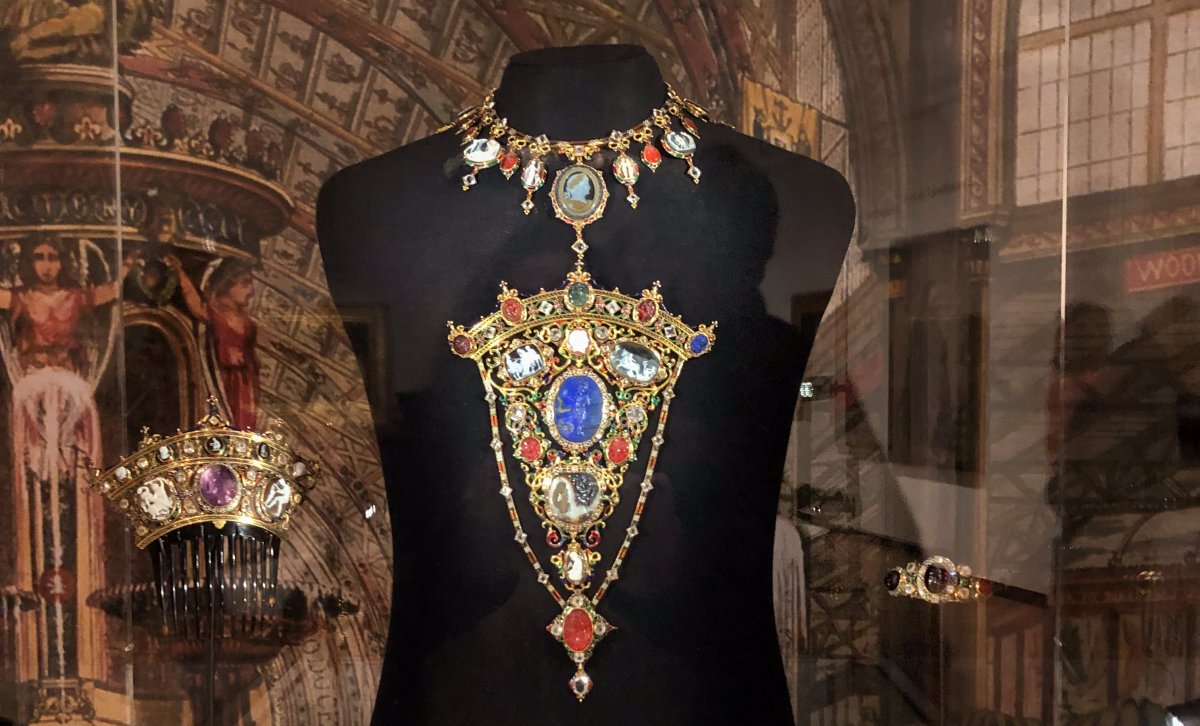
How lucky are we? One of our fabulous TCJ readers, Paola, had the chance to take in another fabulous jewelry exhibition recently, and she’s shared some spectacular photographs with us. Let’s tag along today to enjoy the sparkling Cavendish family treasures loaned to a recent museum display!
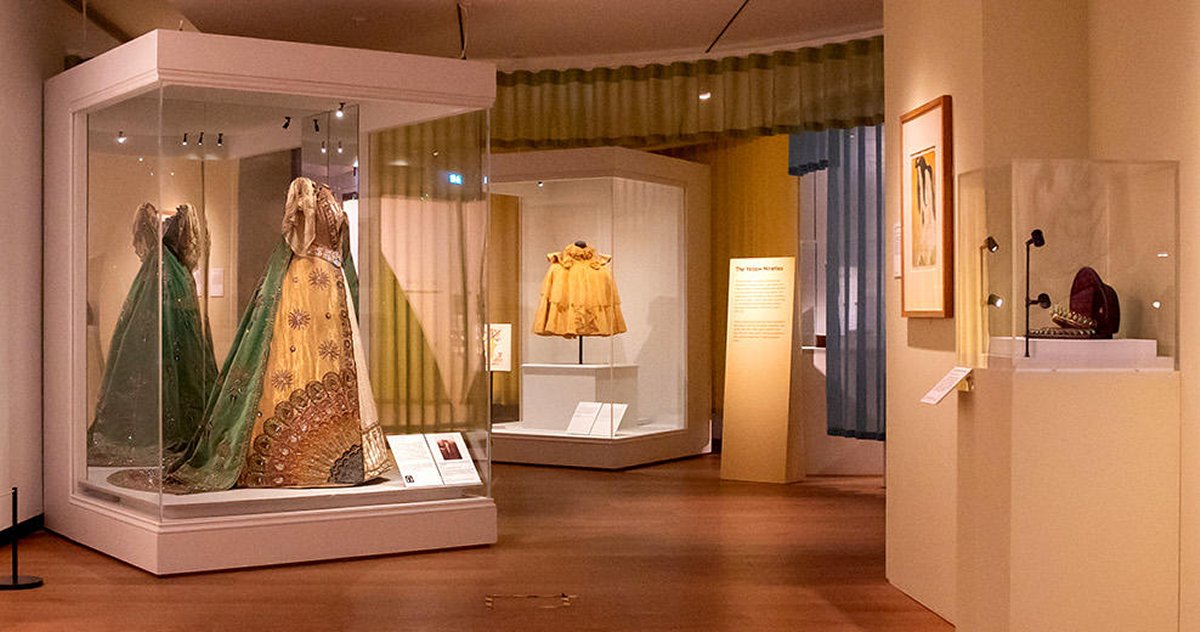
The wonderfully generous Paola recently made a visit to the Ashmolean, the University of Oxford’s museum of art and archaeology, to see their special “Colour Revolution: Victorian Art, Fashion & Design” exhibition. The exhibition is absolutely brimming with the exuberant color that characterized so many parts of the Victorian era. Unfortunately, much of that vibrance has been lost, as our perceptions of the nineteenth-century have been so shaped by black-and-white photography and the mourning attire preferred by Queen Victoria. The museum exhibition is designed to remind us of the true colors of the time.
(On a personal note: I was so touched to receive these photographs from Oxford. My father-in-law, Colin Havard, was born and raised there. He loved to tell stories about his childhood and his university education, and the fascinating tales of his father’s collaboration and friendship with his fellow members of the Inklings. Colin passed away last autumn, and we all miss him so much. Getting these pictures in my inbox put the biggest smile on my face. Thank you so much for that, too, Paola!)
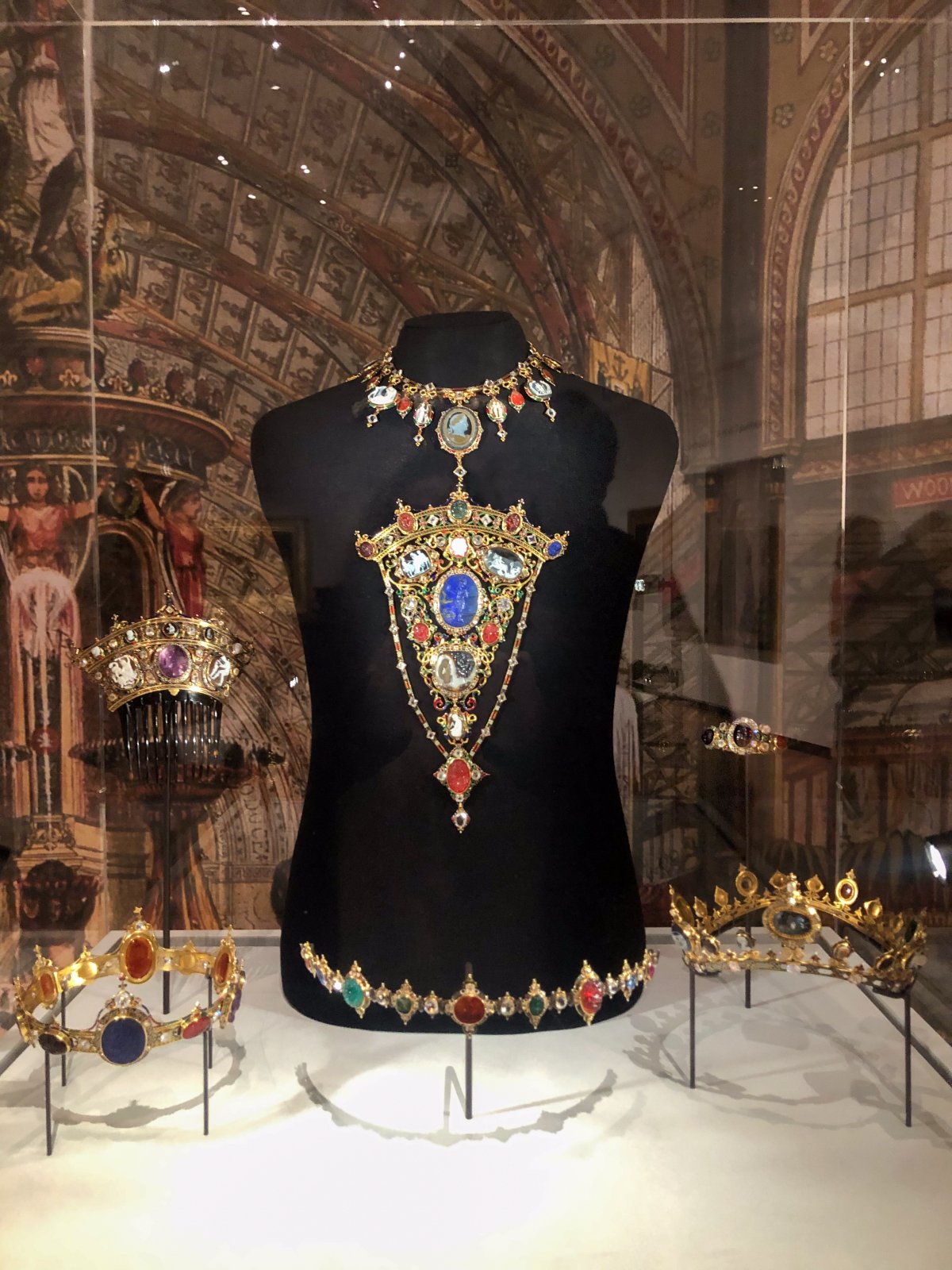
One of the highlights of the “Colour Revolution” exhibition is the fascinating Devonshire Parure. The present Duke and Duchess of Devonshire, Peregrine and Amanda Cavendish, loaned the complete parure (and several other items) to the exhibition. The remarkable suite of jewelry was made in 1856 by C.F. Hancock. It combines gold and diamonds with pieces from the 2nd Duke of Devonshire’s collection of carved gemstones. The Chatsworth website lists the gemstones as “cornelian, onyx, garnet, jacinths, lapis lazuli, plasma, and sardonyx.” Per Sotheby’s, some of those carved gems “date to the ancient world.”
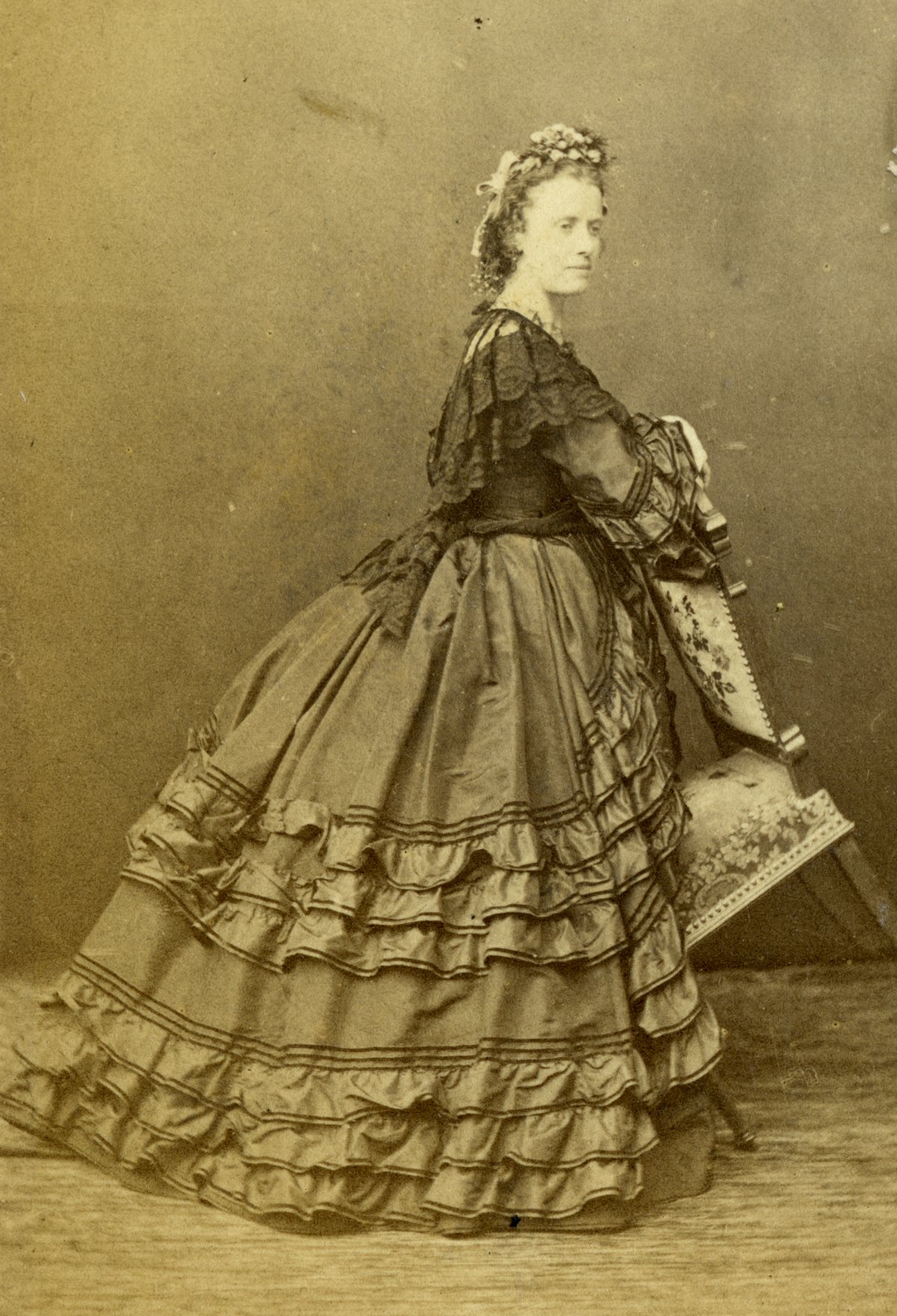
In 1856, the Cavendish family was headed by the 6th Duke of Devonshire. Known as the “Bachelor Duke,” William Cavendish was the son of the 5th Duke and Lady Georgiana Spencer. (Their unconventional relationship was the focus of the 2008 film The Duchess.) William was a politician and a courtier, and in 1826 he was appointed Ambassador Extraordinary to the Russian Empire so that he could be part of the diplomatic party that attended the coronation of Emperor Nicholas I of Russia.
Three decades later, another Cavendish family member was tapped to attend another Russian imperial coronation. The 2nd Earl Granville was William’s nephew, the son of his sister, Lady Harriet Cavendish. Granville, who had served as Foreign Secretary to Queen Victoria in the early 1850s, was named as head of the delegation to attend the coronation of Emperor Alexander II in Moscow in September 1856. The 5th Duke had the Devonshire Parure made for Granville’s wife, Marie Louise (pictured above), to wear during the celebrations.
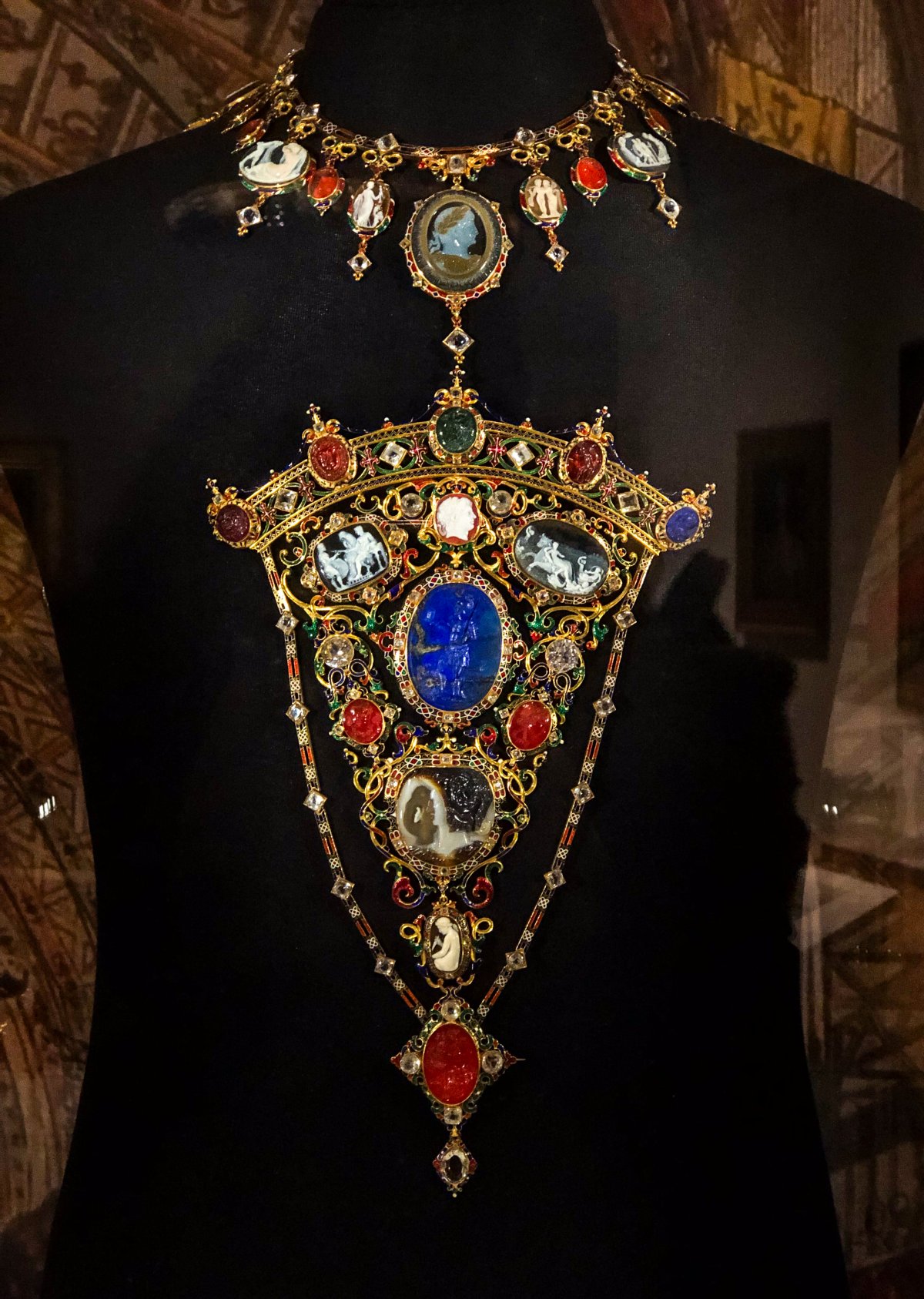
The remarkable parure is an excellent representation of the bursts of color that characterized many pieces of Victorian jewelry and art. The set consists of a necklace, a stomacher, a coronet, a diadem, a bandeau, a comb, and a bracelet.
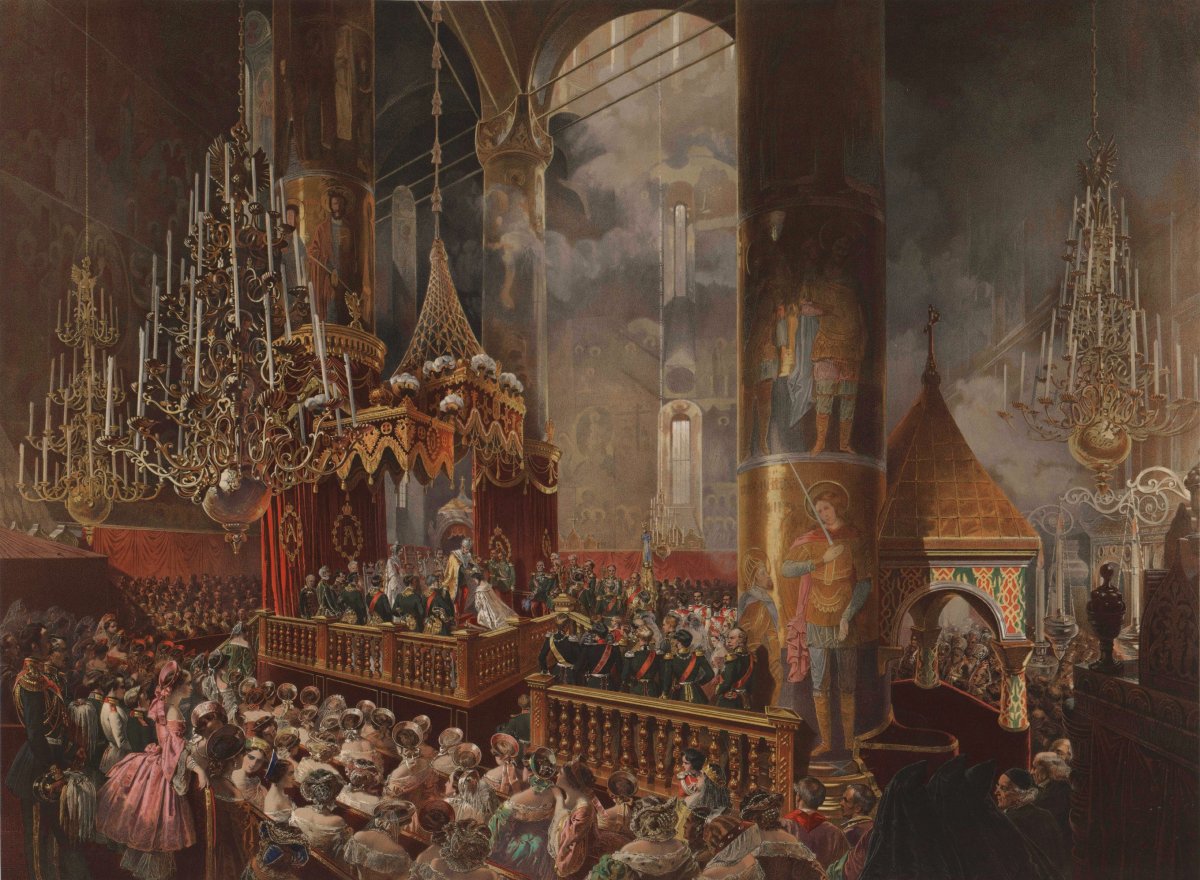
It has always struck me that the parure, as unconventional as it seems to modern viewers, must have looked right at home amid the splendor of the Russian imperial court, with its bright colors and its visual combination of influences from both east and west. The carved gemstones recall the rich iconography used by the Orthodox church, too.
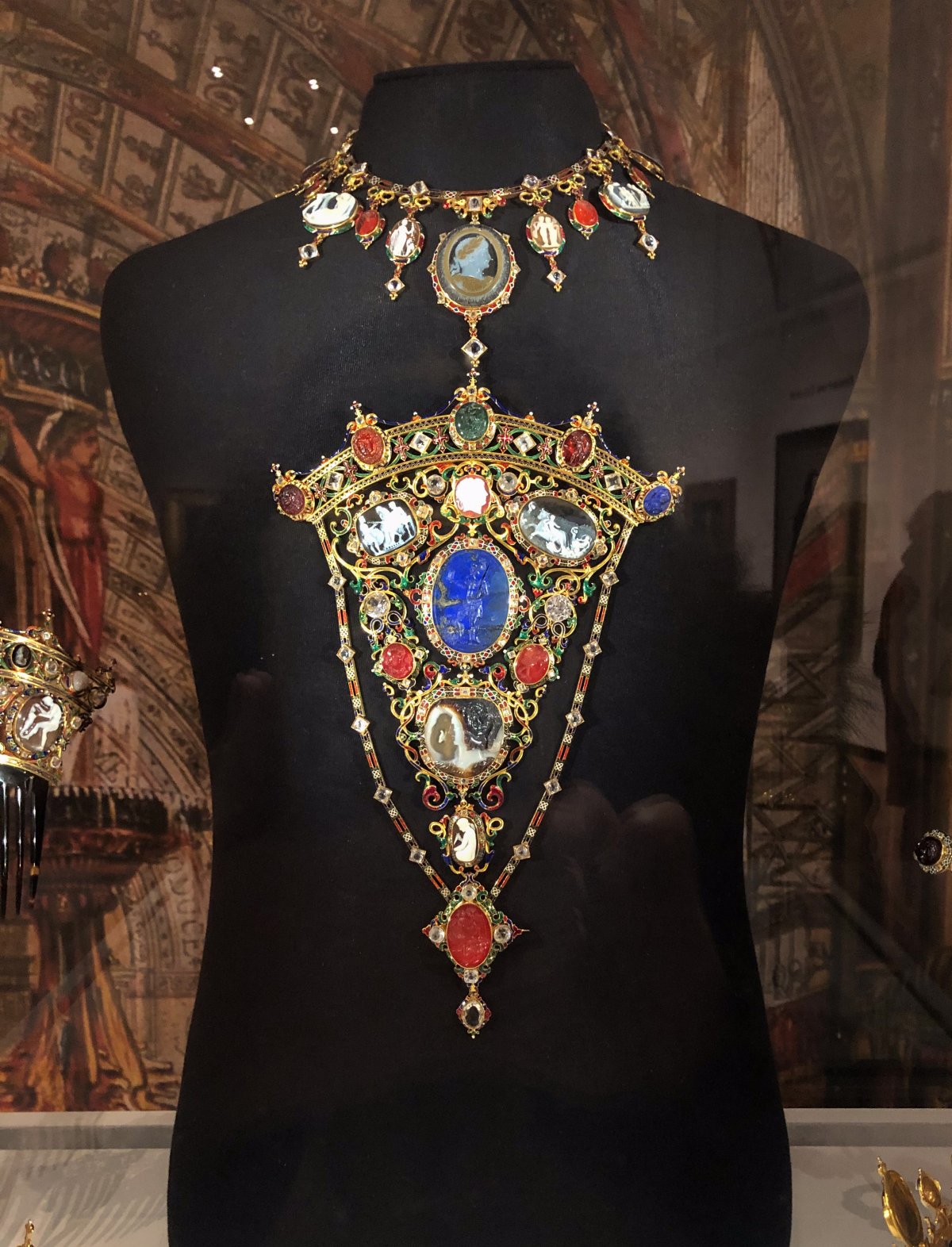
The centerpiece of the parure is undoubtedly the large stomacher, shown here suspended from the set’s necklace. Carved gemstones in bright shades of blue and red catch the wearer’s eye first, followed by the splendid gold and enamel work that surrounds them.
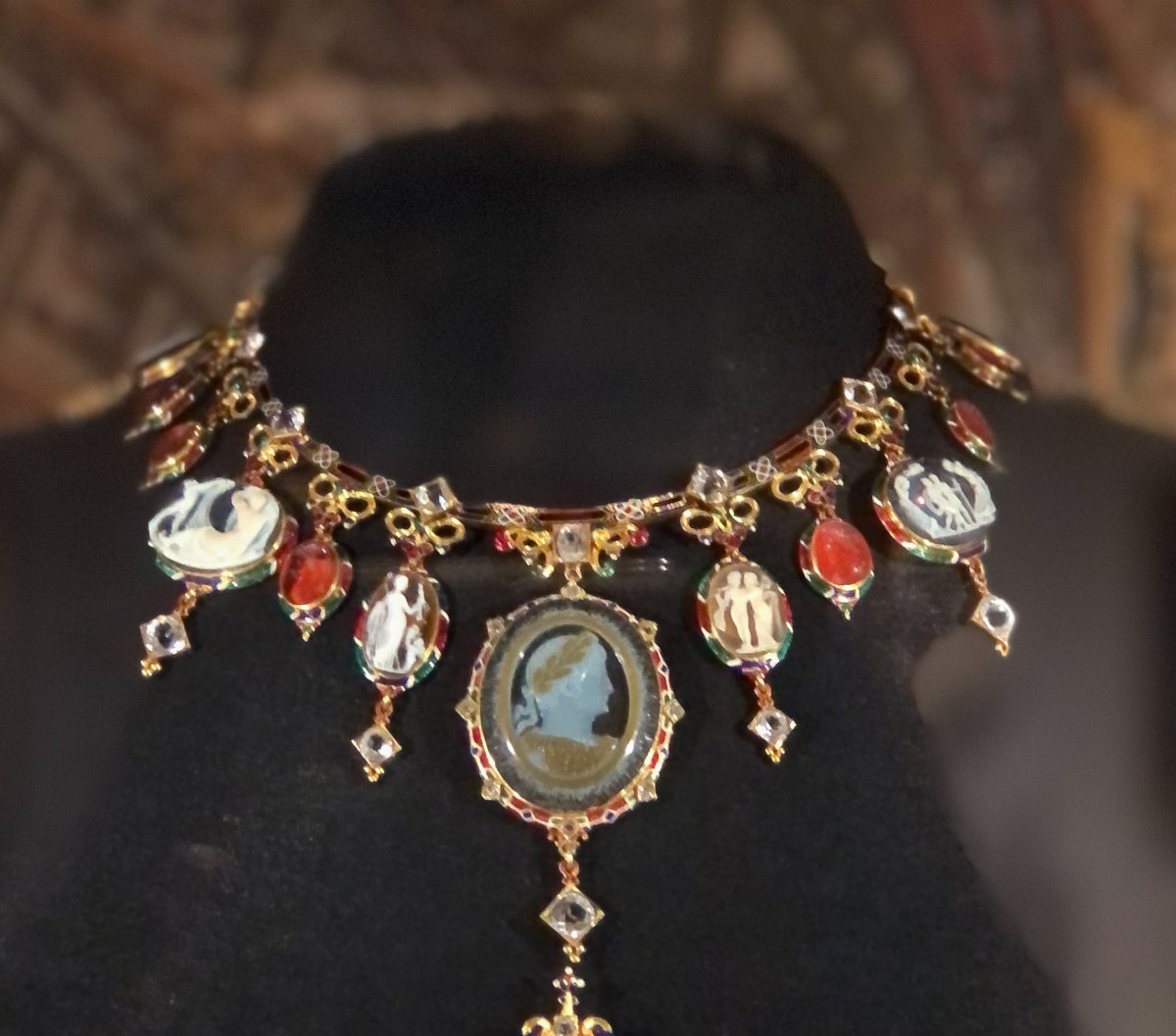
Here’s a closer look at the necklace. Several of the cameos included here remind me of the Cameo Parure that resides in the Swedish royal collection.
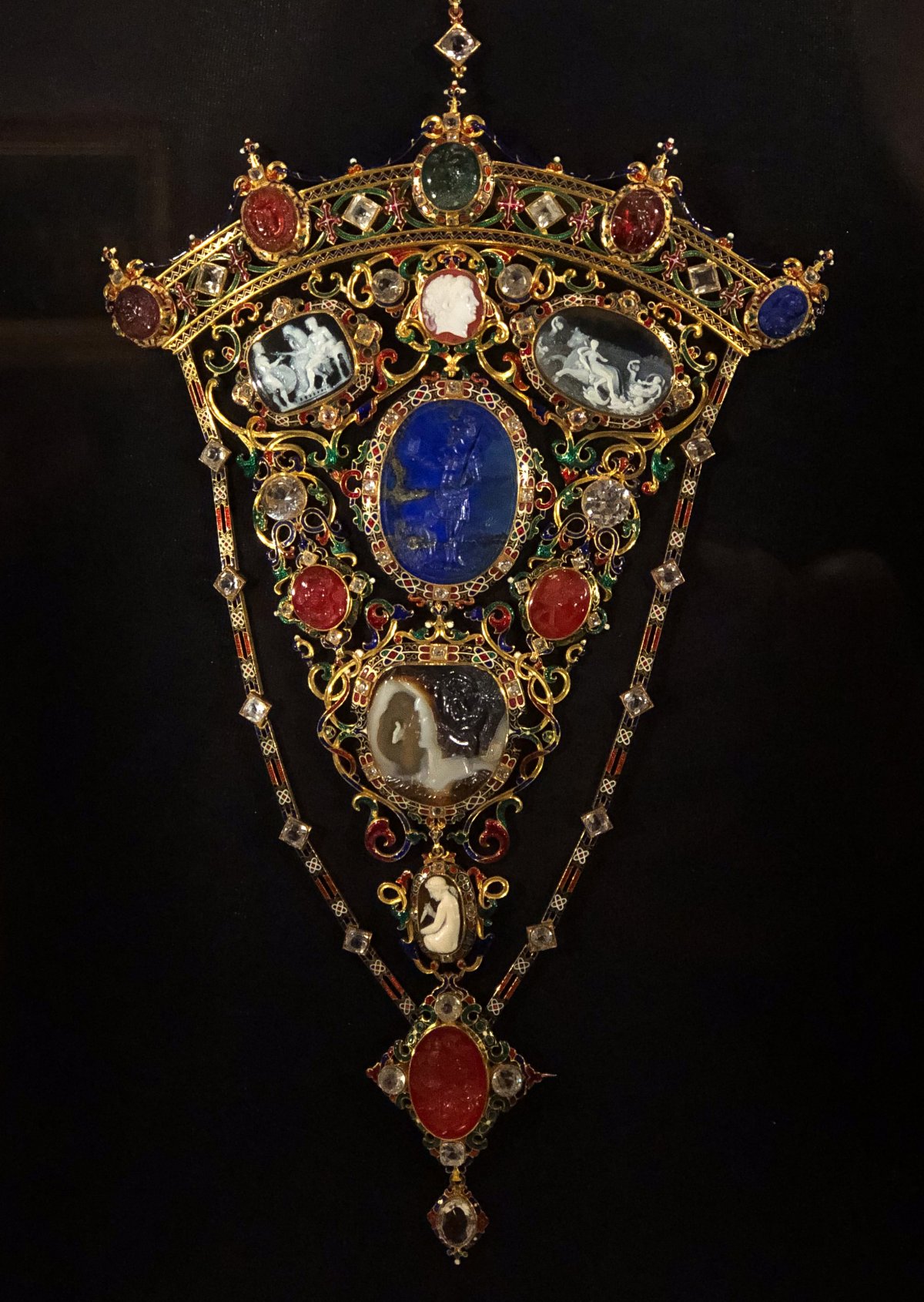
Here’s a closer view of the stomacher as well. It’s busy, and rich, and fascinating—very Victorian.
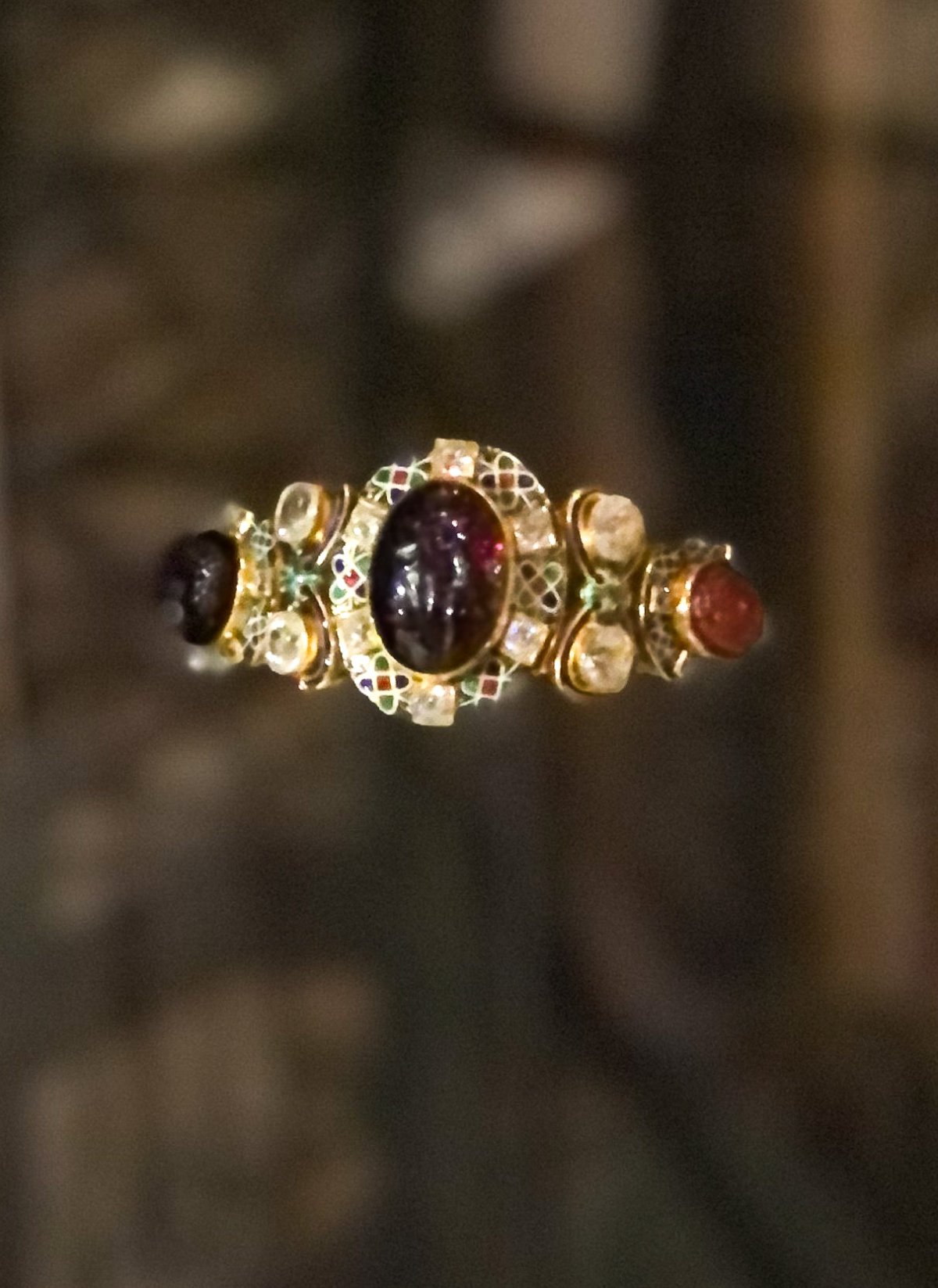
This is the bracelet from the set. A dark, wine-colored carved gemstone dominates this piece.
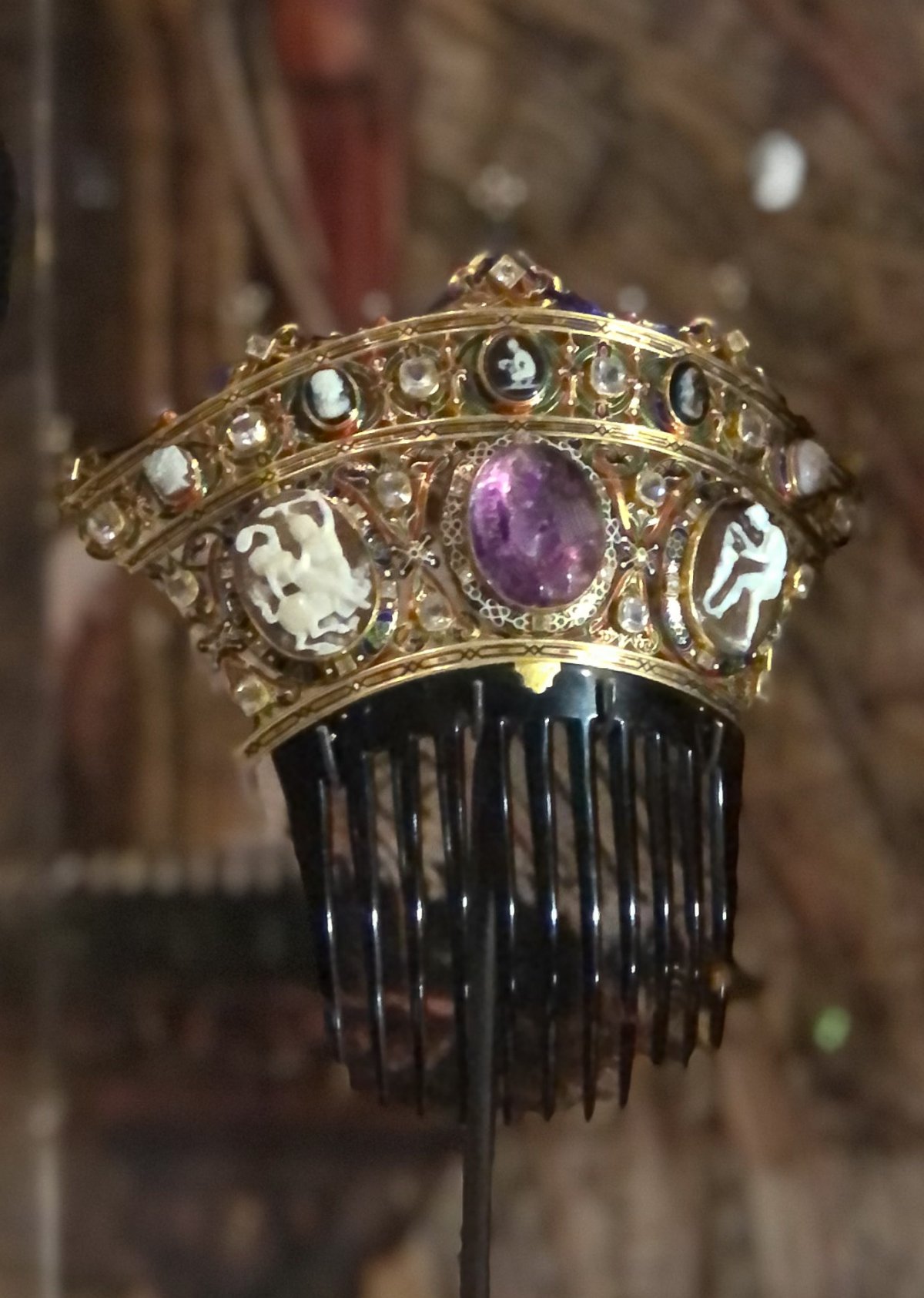
And here’s the comb, with traditional cameos flanking a beautiful carved amethyst.
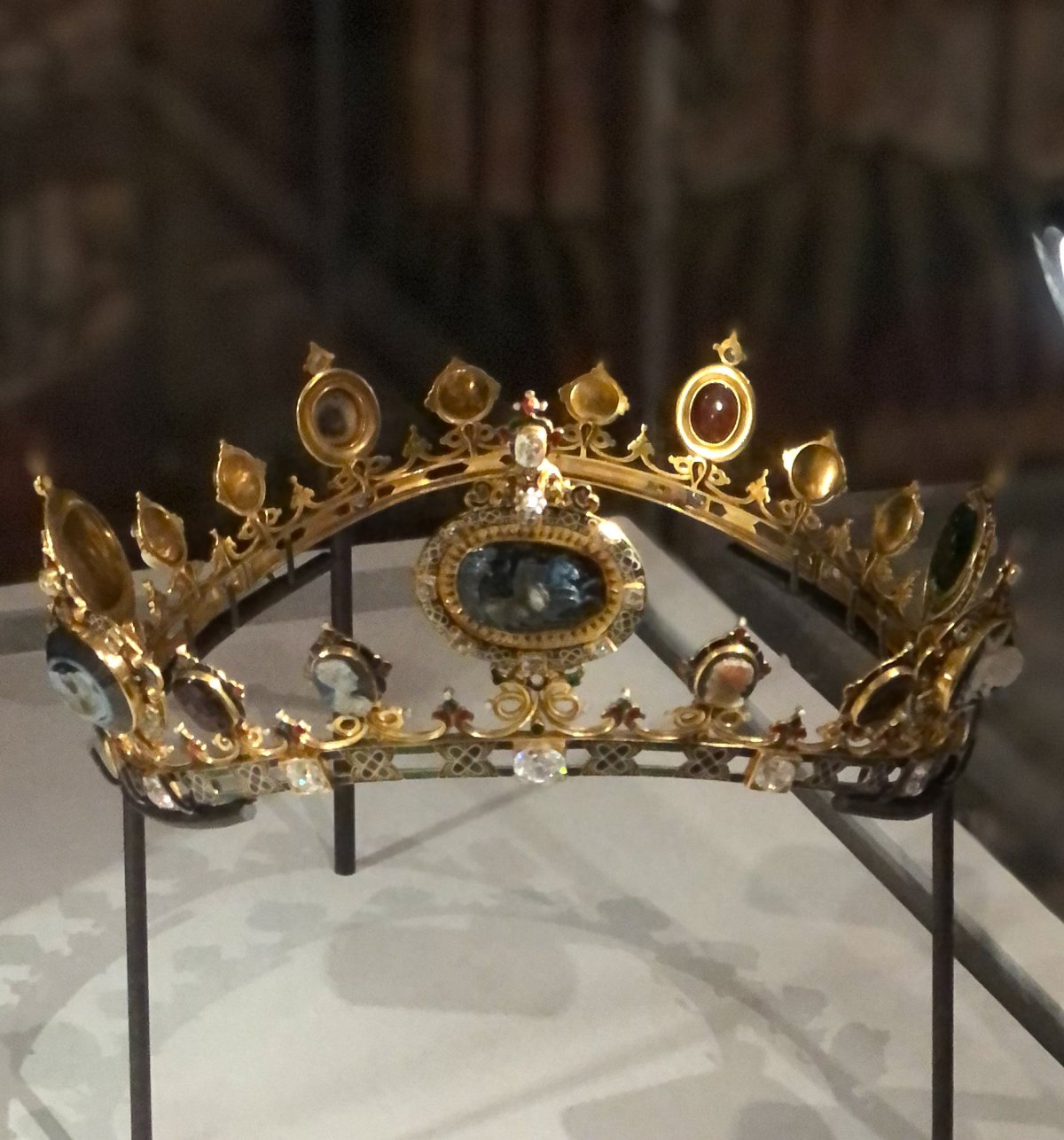
The set includes several more headpiece options, too. (Four in total, actually!) This is the suite’s diadem. Gorgeous, intricate enamel work in shades of bright red, blue, and green surround the carved gemstones in this piece.
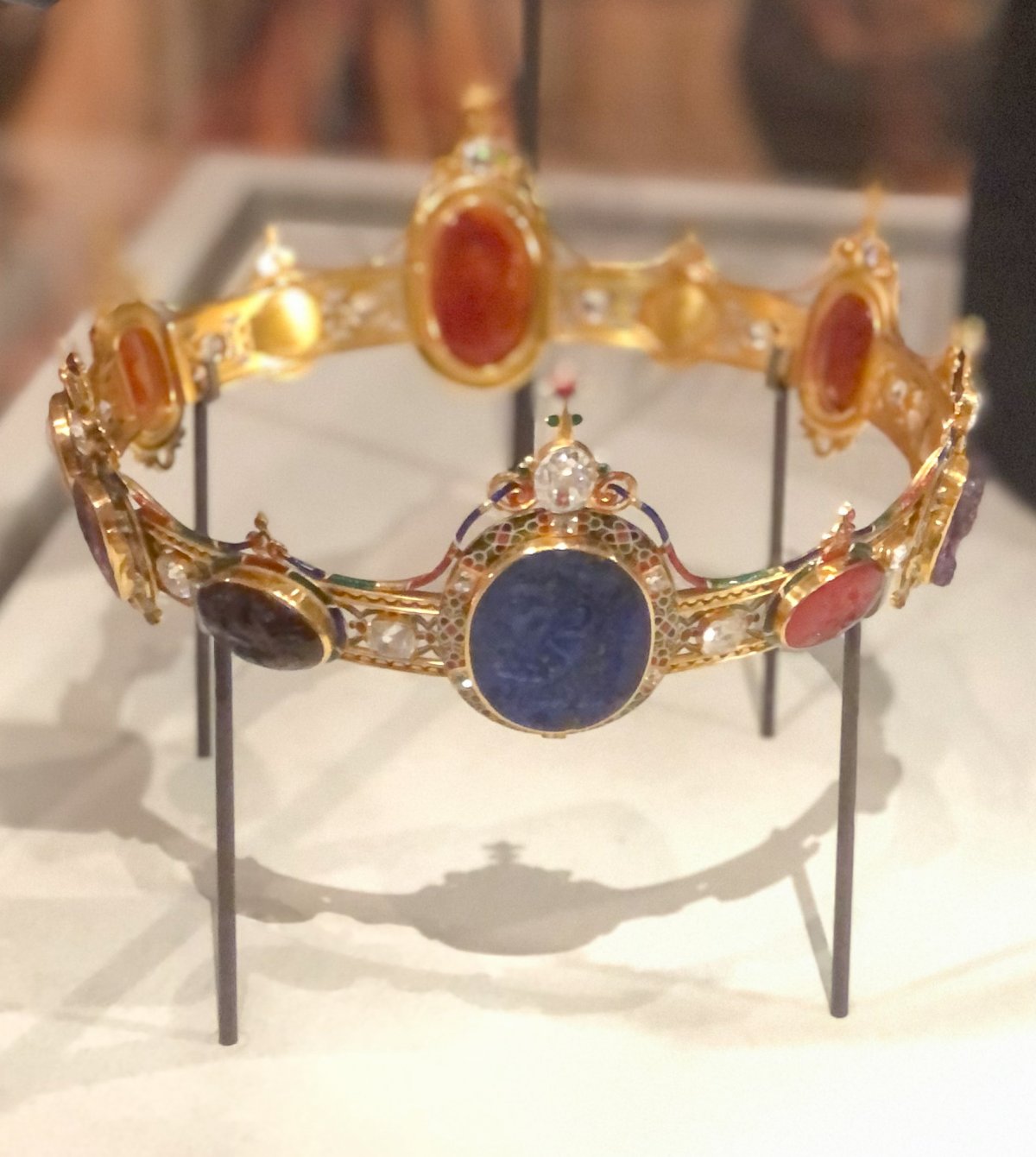
And here’s the coronet from the set. Unusually for a parure, it’s not possible for the entire set to be worn at once. The Chatsworth website explains further: “Countess Granville would have selected which of the seven pieces of the parure to wear depending on the importance of the different occasions surrounding the coronation, and her hairstyle and dress would have been adapted to suit. All seven pieces would never have been worn together as the four separate head pieces could not have been combined.”
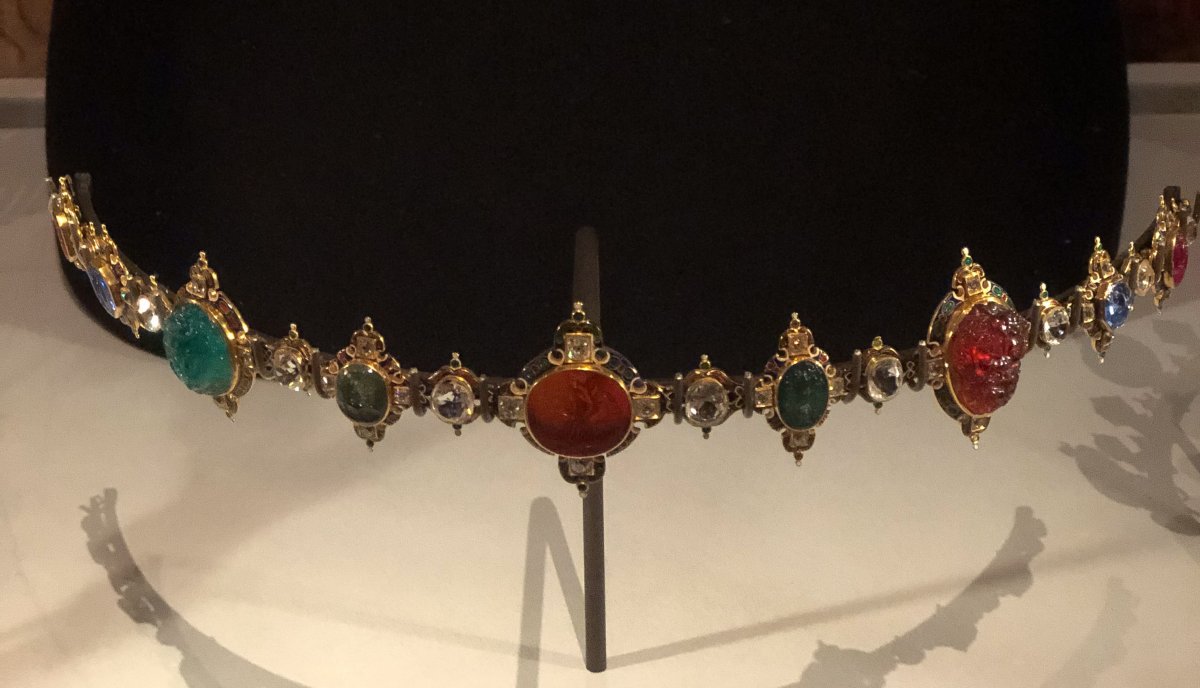
Here’s the seventh and last piece of the parure: a versatile bandeau with luscious gems and a uniform design.
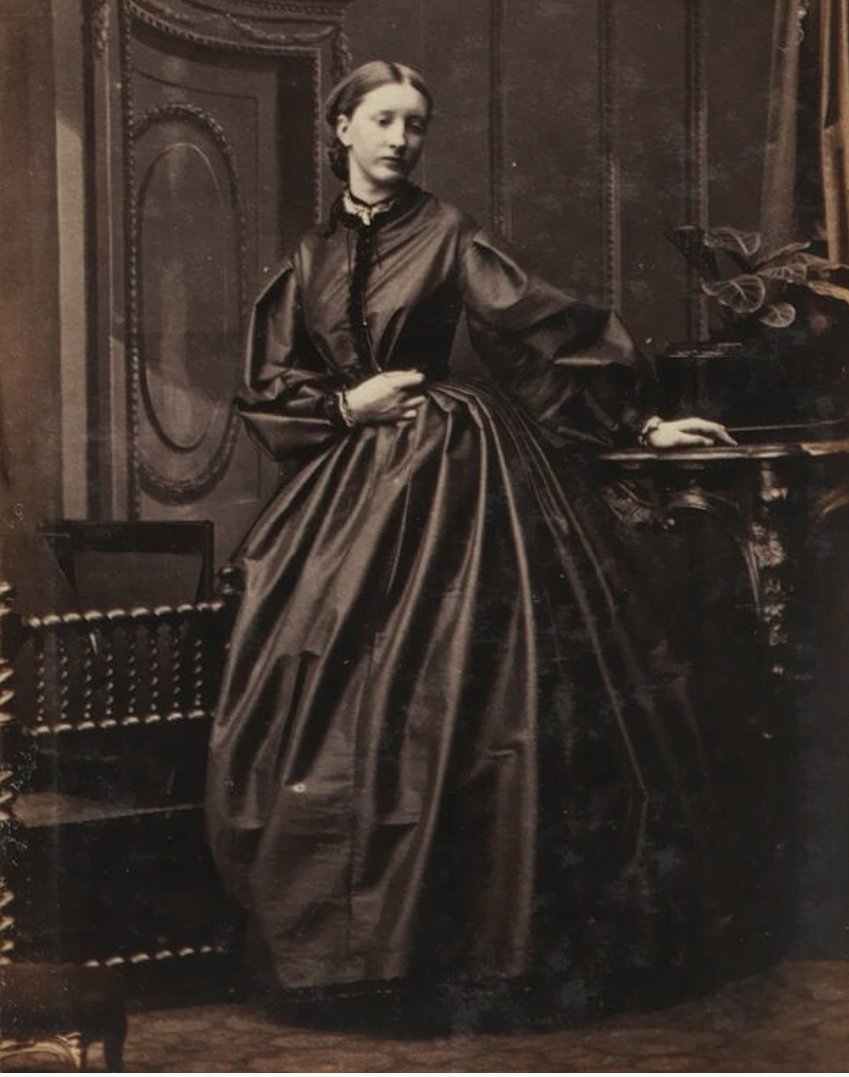
Sadly, Lady Granville did not have long to enjoy the parure. She passed away in 1860. Lord Granville remarried in 1865. The “Colour Revolution” exhibition also includes an interesting (and slightly sinister) set of jewelry worn by his second wife, Castalia (pictured above before their marriage).
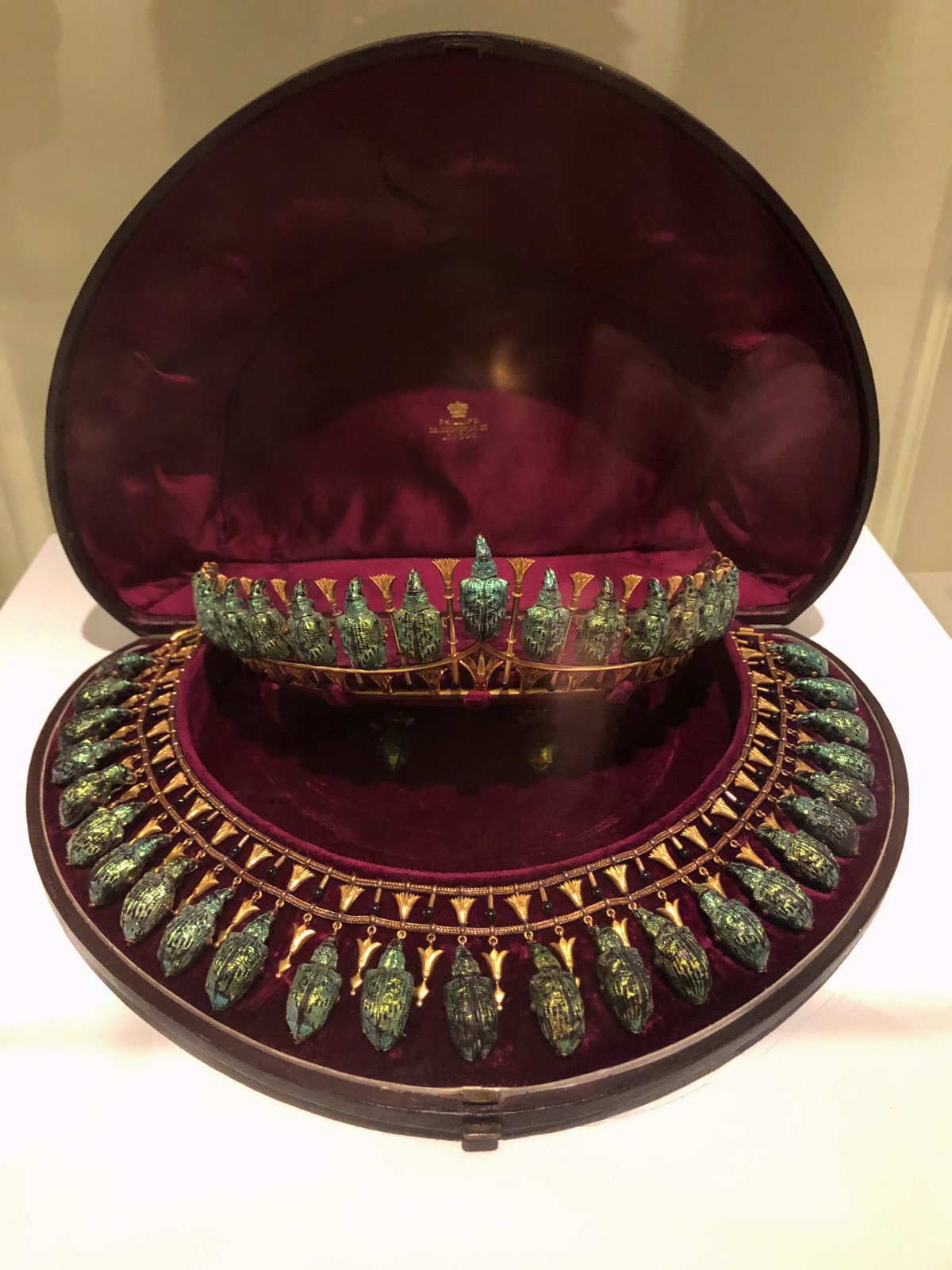
The second Countess Granville’s parure is set not with carved gemstones, but with beetles. It was made by the London jeweler Alfred Phillips around 1884. The story goes that Lord Granville, once again serving as Foreign Secretary, received a collection of dried South American beetles from the Portuguese ambassador. The gift was, unfortunately, a relic of colonialism. It was given in thanks for Granville’s role in negotiating a treaty regarding the possession of territory along the Congo River.
Granville initially rejected the gift, worried that it could be seen as a bribe, but Lady Granville was permitted to accept the beetles. The couple then had the iridescent green weevils, sourced from Brazil, set in this jeweled parure. The tiara, necklace, and earrings are now part of the collection of the British Museum, which describes them as “mounted in gold in the Egyptian taste with a fringe of lotus buds.” The museum’s notes on the object also do a good job of discussing the fraught origins of the set.
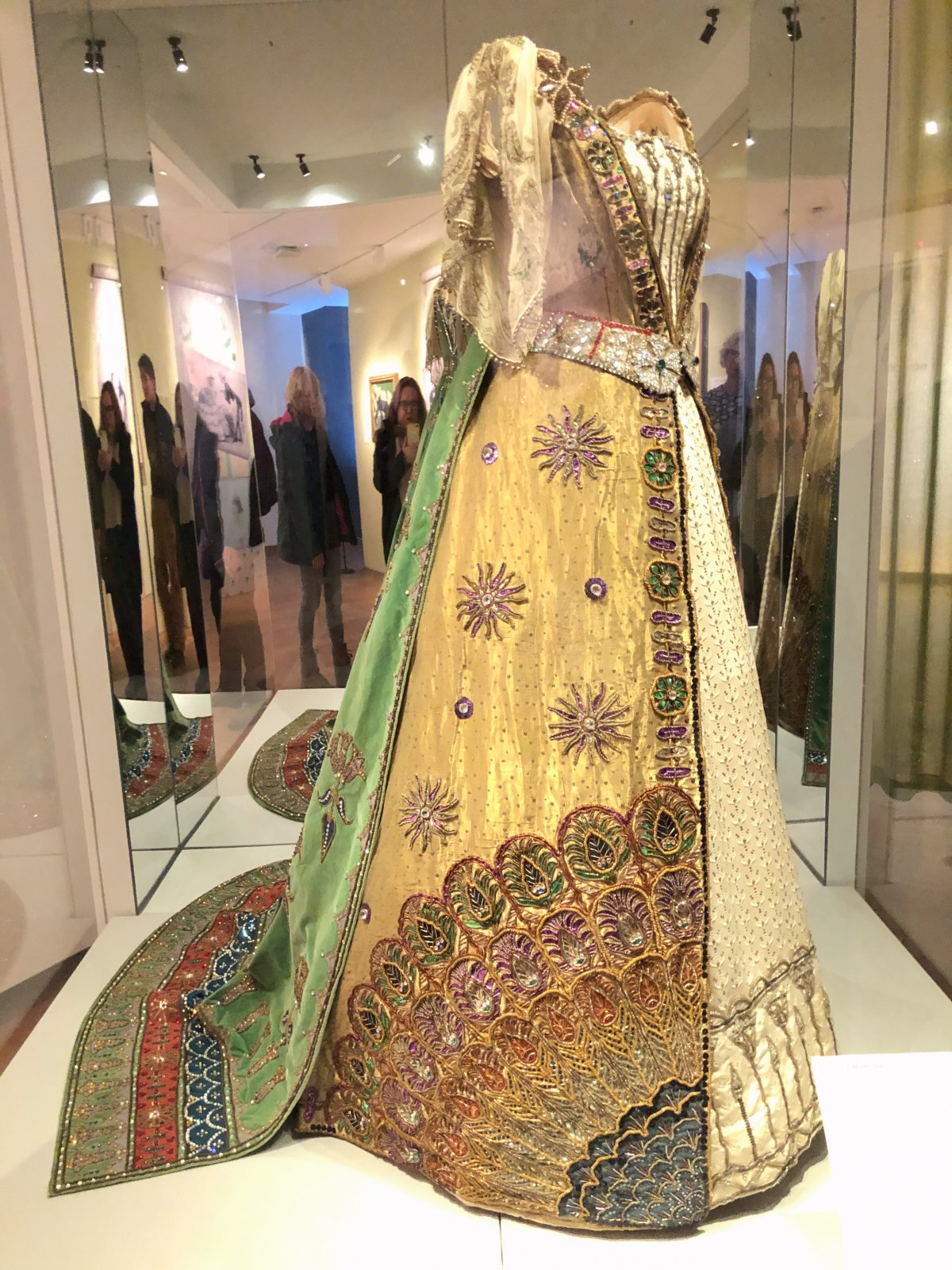
We’ll wrap up today with Paola’s excellent photograph of the famous Worth gown worn by Louisa, wife of the 8th Duke of Devonshire, at the famed Devonshire House Ball in the summer of 1897. (Louisa is the famous “Double Duchess” of the Victorian era, married first to the Duke of Manchester and then, after his death, to the Duke of Devonshire.) The fancy dress ball was part of the celebrations of Queen Victoria’s Diamond Jubilee, and the costumed guests included members of the royal family, aristocrats, diplomats, and other notables. As hostess of the ball, the Duchess of Devonshire shone in this colorful, elaborate gown, part of her costume as Zenobia, ruler of the ancient kingdom of Palmyra.
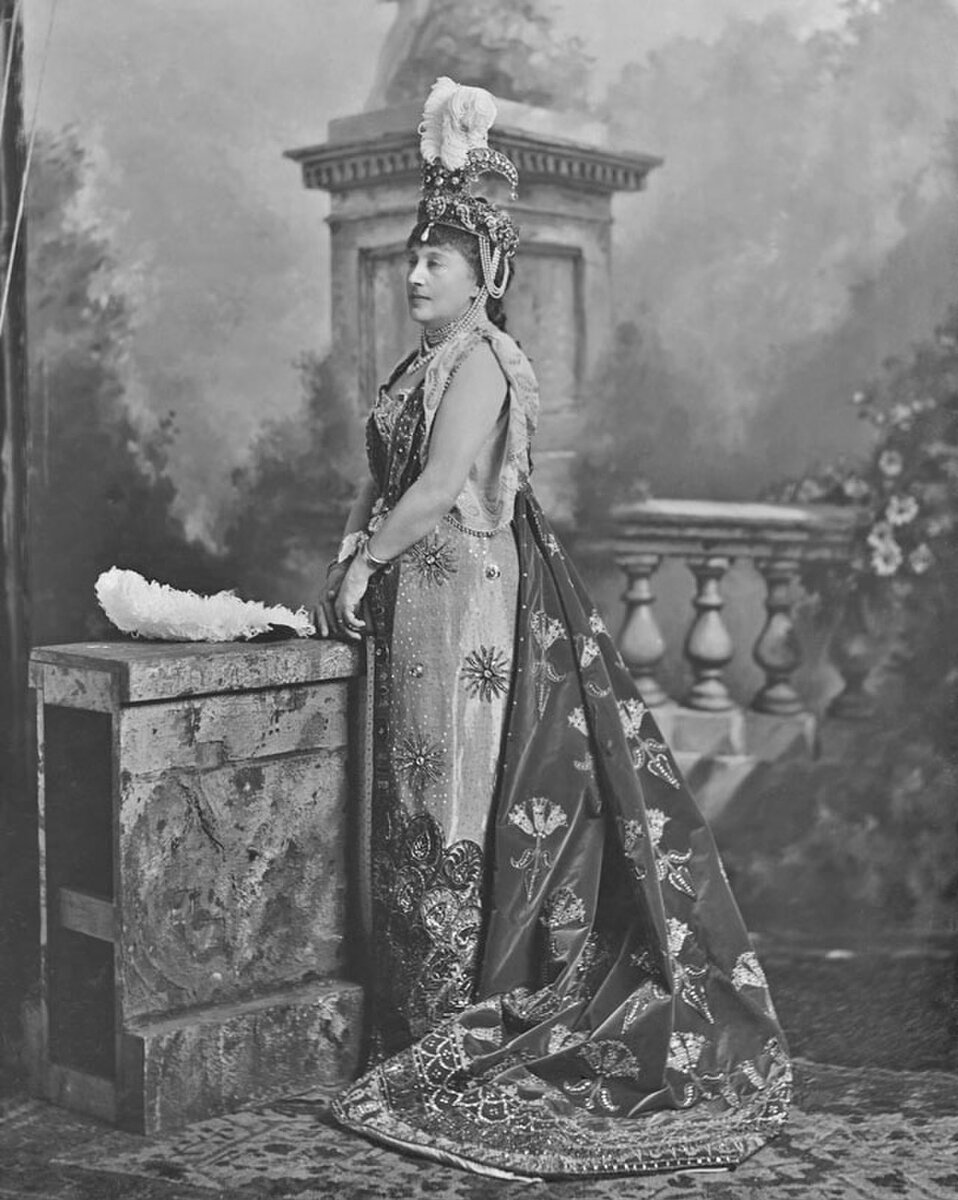
This is one of the images of the gown that we’re more familiar with: a photograph of the Duchess wearing the gown during the ball. The contrast between the two images helps to drive home the point of the exhibition. The development of photography offers us a wonderful window into the history of the nineteenth century, but the black-and-white imagery dulls down the riot of color that washed through the era. Thankfully, the gown itself has survived as a testament to the vivid colors of their reality. I’m honestly impressed at how colorful it remains more than a century after its creation—excellent maintenance work on the part of the team at Chatsworth, certainly.

If you’re lucky enough to be able to travel to the Ashmolean to see the “Colour Revolution” exhibition, you have just a few more weeks to get there before it closes on February 18. You can learn more about ticketing information on the museum’s website. Please join me again in thanking Paola for allowing us to have a little glimpse into the wonderful show!
And before I go, a couple of related notes. First off: if you’re interested in learning more about Lady Granville, the Devonshire Parure, and the imperial coronation of 1856, you’ll definitely want to be sure that you’re subscribed to my Substack newsletter, Hidden Gems, ahead of this Saturday’s new article. (Hint, hint!) I’ve been so overwhelmed by the way that so many of you have embraced Hidden Gems, and I’m humbled every day by the messages that I’ve received from subscribers. Thank you so much for your support!
To celebrate the first month of Hidden Gems, I’m going to offer a thank-you treat. Tomorrow (Friday, February 2) at noon eastern, I’ll be selecting three subscribers at random to upgrade from the “free” tier, gifting them three months of free access to the platform’s subscriber-only content. Be sure your email is on the list by then so that you can be part of the drawing! The three winners should receive notification of their free three-month upgrade in their inboxes on Friday afternoon.
Leave a Reply
You must be logged in to post a comment.